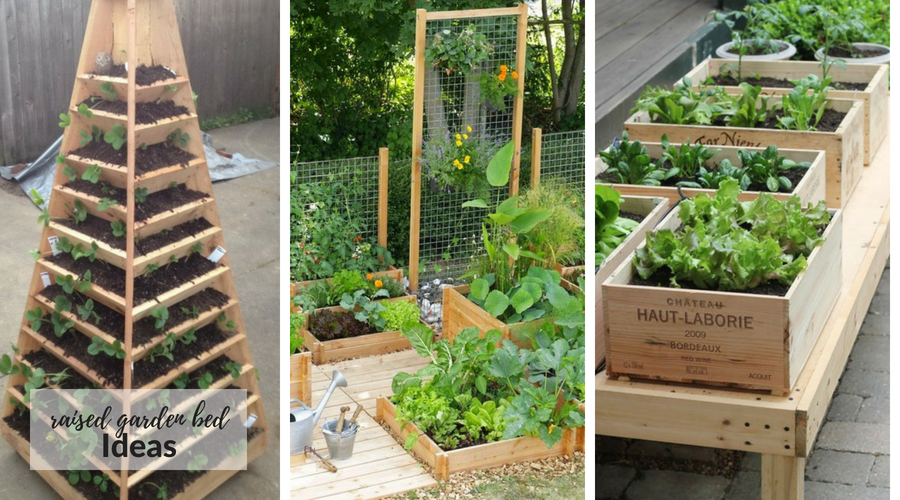Easy Veggies: Beginner's Raised Garden Bed Guide
Imagine the satisfaction of strolling into your backyard, not to mow or weed, but to harvest a crisp, vibrant salad, grown entirely by your own hand. Picture plump tomatoes ripening in the sun, waiting to be sliced and savored. This idyllic scene is closer than you think, especially with a raised garden bed. The journey from garden novice to bountiful harvest starts with choosing the right plants. And that's why we're diving into the 10 Easiest Vegetables for Beginners to Grow in a Raised Garden Bed, your gateway to successful beginner gardening.
Getting Started: Preparing Your Raised Garden Bed
Before you can even think about planting, you need a well-prepared raised garden bed. This is crucial for the success of your easy to grow vegetables. The quality of your soil and the location of your bed are paramount.
Choosing the Right Location
Sunlight is your vegetable's best friend. Aim for a spot that receives at least 6-8 hours of direct sunlight per day. This is non-negotiable for most fruiting vegetables like tomatoes and peppers. Consider the proximity to a water source as well. Lugging heavy watering cans across the yard gets old quickly. Ensure the location is also relatively level to prevent water runoff and soil erosion.
Building or Buying Your Raised Bed
You can build your own raised garden bed using untreated lumber, concrete blocks, or even repurposed materials. Alternatively, you can purchase a pre-made kit. A good size for a beginner is 4 feet by 4 feet, allowing for easy access from all sides. The depth should be at least 12 inches to provide adequate space for root growth. Make sure to line the bottom of the bed with landscape fabric to prevent weeds from growing up from the ground below.
The Importance of Good Soil
Soil is the foundation of your garden. Avoid using soil directly from your yard, as it may be compacted, nutrient-poor, or contain weed seeds. Instead, opt for a high-quality raised bed mix, which is typically a blend of topsoil, compost, and other organic materials. This provides excellent drainage, aeration, and nutrients for your plants. Consider testing your soil's pH level. Most vegetables prefer a slightly acidic to neutral pH (around 6.0-7.0). Amend the soil as needed based on the test results.
Top 10 Easiest Vegetables for Beginners in Raised Beds
Here's a curated list of vegetables that are known for their resilience, adaptability, and ease of cultivation in raised garden beds, perfect for kicking off your vegetable gardening adventure. These are fantastic options for growing vegetables for beginners:
- Lettuce: Loose-leaf lettuce varieties are incredibly easy to grow. Simply sprinkle seeds, keep the soil moist, and harvest leaves as needed. They thrive in cooler weather, making them ideal for spring and fall plantings.
- Radishes: These speedy little roots are ready to harvest in just 3-4 weeks. They tolerate a wide range of conditions and are relatively pest-free.
- Spinach: Similar to lettuce, spinach is a cool-season crop that's easy to grow from seed. Harvest outer leaves as needed, allowing the plant to continue producing.
- Bush Beans: Unlike pole beans, bush beans don't require trellising. They produce abundant yields in a compact space.
- Zucchini: Be warned – zucchini plants are prolific! One or two plants are usually sufficient for a small family. They're relatively low-maintenance and produce abundant fruits.
- Cherry Tomatoes: These small, sweet tomatoes are much easier to grow than larger varieties. They're relatively disease-resistant and produce fruit throughout the summer.
- Peppers (Bell & Sweet): Peppers thrive in warm weather and are relatively pest-free. Choose varieties that are labeled as "early maturing" for the best results in cooler climates.
- Carrots: Choose shorter, rounder carrot varieties like 'Thumbelina' or 'Parisian' for raised beds, as they don't require as much depth.
- Green Onions: These are incredibly easy to grow from seed or from scraps. Simply plant the white bulb end of a green onion in the soil, and it will regrow.
- Swiss Chard: This colorful leafy green is not only easy to grow but also adds visual appeal to your garden. It's relatively heat-tolerant and can be harvested continuously throughout the season.
Detailed Growing Guide for Three Beginner-Friendly Vegetables
Let's delve deeper into the cultivation of three particularly easy and rewarding vegetables:
Lettuce: A Cool-Season Staple
Lettuce is a champion for beginner gardeners. It's fast-growing, relatively pest-free, and can be harvested continuously. Sow seeds directly into your raised garden bed in early spring or late summer. Thin seedlings to allow for proper spacing. Keep the soil consistently moist, but avoid overwatering, which can lead to rot. Harvest outer leaves as needed, allowing the plant to continue producing. Succession planting every few weeks will ensure a continuous supply of fresh lettuce throughout the growing season.
Radishes: The Speedy Root Crop
Radishes are known for their rapid growth, making them a satisfying crop for impatient gardeners. Sow seeds directly into your raised garden bed in early spring or late summer. Plant seeds about ½ inch deep and 1 inch apart. Keep the soil consistently moist. Radishes are ready to harvest in just 3-4 weeks. Don't leave them in the ground too long, as they can become woody and bitter. Succession planting is key for a continuous harvest.
Zucchini: Abundance in a Small Space
Zucchini is a prolific producer, so start with just one or two plants. Sow seeds directly into your raised garden bed after the last frost. Space plants about 2-3 feet apart. Zucchini plants require full sun and well-drained soil. Water deeply and regularly, especially during dry spells. Harvest fruits when they are young and tender, about 6-8 inches long. Regular harvesting encourages continued production. Be prepared to share your bounty with friends and neighbors!
Creating Your Planting Calendar
A well-planned planting calendar is essential for maximizing your vegetable garden planning and ensuring a continuous harvest. This table outlines optimal planting times for each vegetable, depending on your climate.
| Vegetable | Spring Planting (Direct Sow) | Fall Planting (Direct Sow) |
|---|---|---|
| Lettuce | Early Spring (as soon as soil can be worked) | Late Summer (6-8 weeks before first frost) |
| Radishes | Early Spring (every 2 weeks for continuous harvest) | Late Summer (every 2 weeks for continuous harvest) |
| Spinach | Early Spring (as soon as soil can be worked) | Late Summer (6-8 weeks before first frost) |
| Bush Beans | After Last Frost | Not Recommended |
| Zucchini | After Last Frost | Not Recommended |
| Cherry Tomatoes | After Last Frost (start indoors 6-8 weeks before) | Not Recommended |
| Peppers (Bell & Sweet) | After Last Frost (start indoors 6-8 weeks before) | Not Recommended |
| Carrots | Early Spring | Late Summer (8-10 weeks before first frost) |
| Green Onions | Early Spring | Late Summer |
| Swiss Chard | Early Spring | Late Summer |
Tip: Check your local extension office or a regional gardening guide for specific planting dates tailored to your area. Microclimates can vary significantly, even within a small region.
Maintaining Your Raised Garden Bed
Once your vegetables are planted, it's important to provide ongoing care to ensure their health and productivity. Here are some essential maintenance tasks:
- Watering: Water deeply and regularly, especially during dry spells. Aim to keep the soil consistently moist but not waterlogged. Morning watering is ideal to allow foliage to dry before nightfall, reducing the risk of fungal diseases.
- Weeding: Regularly remove weeds to prevent them from competing with your vegetables for nutrients and water. Hand-pulling is usually sufficient for small raised garden beds.
- Fertilizing: Supplement your soil with a balanced organic fertilizer every few weeks. This will provide your plants with the nutrients they need to thrive.
- Pest Control: Monitor your plants regularly for signs of pests. Use organic pest control methods, such as insecticidal soap or neem oil, to control infestations.
Troubleshooting Common Problems
Even the easiest vegetables can encounter problems. Here are some common issues and how to address them:
- Yellowing Leaves: Can indicate overwatering, underwatering, or nutrient deficiencies. Check the soil moisture level and adjust watering accordingly. Fertilize with a balanced organic fertilizer.
- Pest Infestations: Aphids, slugs, and cabbage worms are common pests. Use insecticidal soap, diatomaceous earth, or hand-picking to control infestations.
- Fungal Diseases: Powdery mildew and other fungal diseases can occur in humid conditions. Ensure good air circulation and avoid overhead watering. Use a fungicide if necessary.
- Poor Germination: Can be caused by old seeds, cold soil, or improper watering. Use fresh seeds, wait for warmer soil temperatures, and keep the soil consistently moist.
Pro Tips for Beginner Success
Elevate your beginner gardening game with these expert tips:
- Start Small: Don't overwhelm yourself by planting too much too soon. Start with a few easy vegetables and gradually expand your garden as you gain experience.
- Succession Planting: Plant small batches of vegetables every few weeks to ensure a continuous harvest throughout the growing season.
- Companion Planting: Pair plants that benefit each other. For example, basil repels pests that attack tomatoes.
- Keep a Garden Journal: Record planting dates, varieties, successes, and failures. This will help you learn from your mistakes and improve your gardening skills over time.
- Observe Your Garden Daily: Pay attention to your plants and address any problems as soon as they arise. Early detection is key to preventing major issues.
FAQ
Here are some frequently asked questions about growing vegetables in raised garden beds:
- Q: What is the best soil for a raised garden bed? A: A well-draining raised bed mix consisting of topsoil, compost, and other organic materials is ideal.
- Q: How often should I water my raised garden bed? A: Water deeply and regularly, especially during dry spells. Check the soil moisture level regularly and adjust watering accordingly.
- Q: Do I need to fertilize my raised garden bed? A: Yes, supplement your soil with a balanced organic fertilizer every few weeks to provide your plants with the nutrients they need.
- Q: What do I do with my raised garden bed in the winter? A: Cover the bed with a layer of compost or mulch to protect the soil from erosion and add nutrients. You can also plant a cover crop to improve soil health.
- Q: What are the best container gardening vegetables for beginners? A: Many of the vegetables listed above, like lettuce, radishes, and herbs, do very well in containers. Choose appropriately sized containers with drainage holes.
Embark on your vegetable gardening journey with confidence! Armed with this guide and a bit of patience, you'll be harvesting fresh, delicious vegetables from your raised garden bed in no time. Happy gardening!

